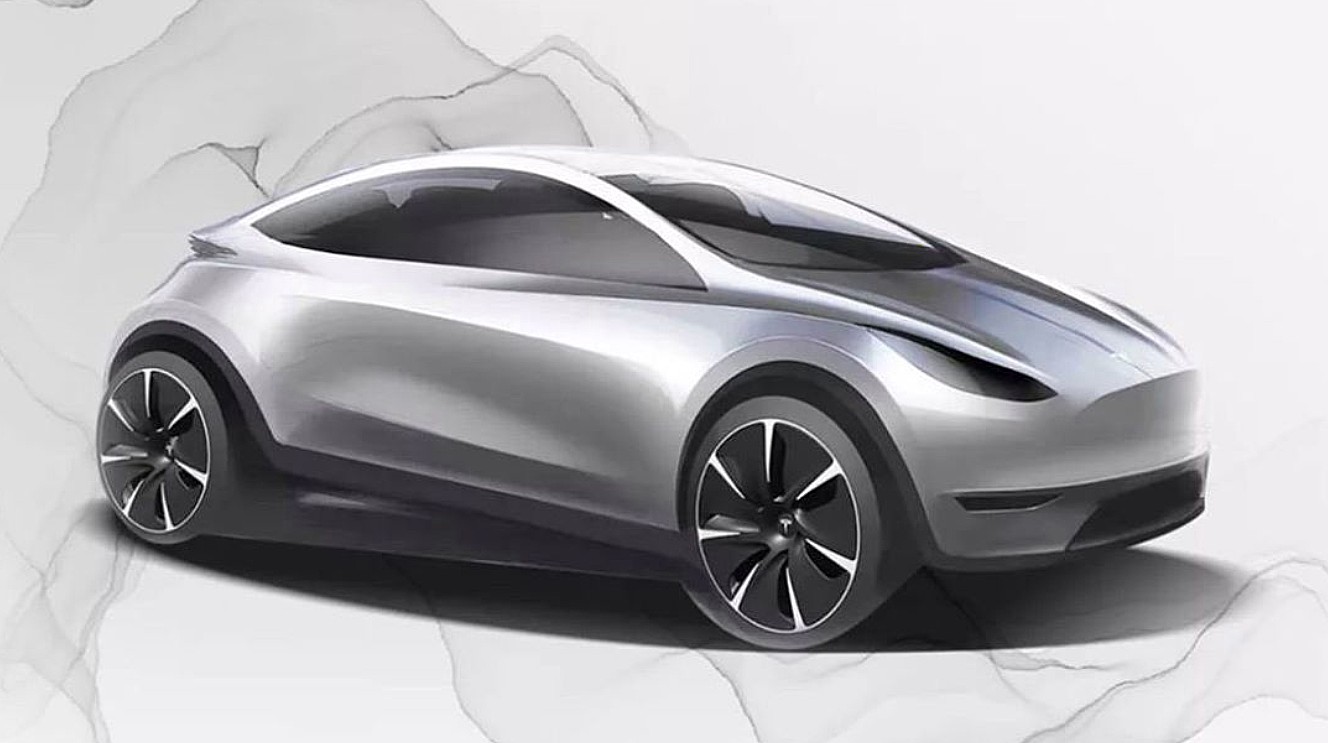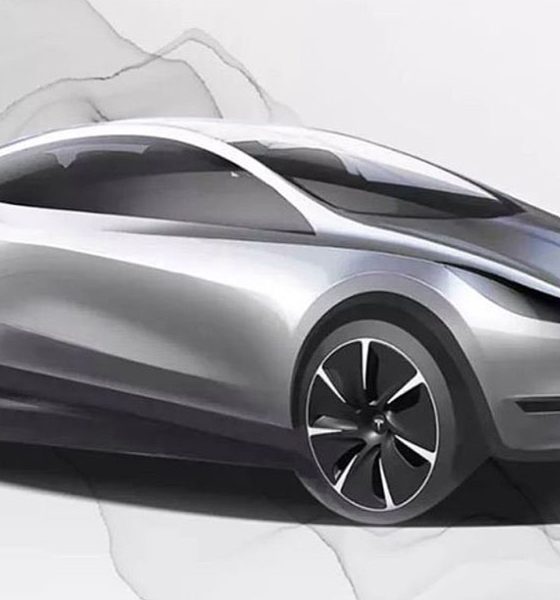

News
Tesla’s next vehicles have the potential to usher in the extinction of gas cars
During the second quarter earnings call, Elon Musk tentatively confirmed that Tesla would be making a compact car and a vehicle with high capacity. Granted, it would probably take a few more years before such vehicles are produced, but one thing seems certain. Considering Tesla’s speed and pace, it would not be surprising if Tesla’s compact car and high capacity EV causes the extinction of the internal combustion engine.
Tesla’s current lineup of vehicles, which comprise the Model S, Model 3, Model X, and Model Y, are great EVs, but they are still fairly large for their class. This includes the Model 3 and the Model Y, Tesla’s “smaller” vehicles in its lineup. This, together with the vehicles’ premium price, end up blocking the company from reaching its full potential in the auto market. With a compact car and a high capacity vehicle, however, things could drastically change for Tesla.
Compact and High Capacity EVs
Tesla has mentioned the creation of a smaller car in the past, and more recently, the company has tapped into China’s creative minds for help in designing its compact car. This vehicle is expected to be designed and manufactured in China, but the opportunities for such a car go far beyond the country. Compact cars have a dedicated following, after all, and for good reason.
A higher capacity vehicle is also a key part of the mass market puzzle that Tesla could tap into. Higher capacity vehicles could come in many forms, like vans that could either transport people or cargo. Fellow EV maker Rivian is already involved in the development of electric vans, thanks to its partnership with Amazon. It would then not be surprising if Tesla also dips its feet in the development of its a similar line of vehicles, especially those that it could use for its own operations.
Opportunities in Developing Countries
Tesla’s current S,3,X,Y lineup are still premium cars through and through, and one thing that they cannot do is compete in a market that prioritizes cost. These markets, such as India and other southeast Asian nations, actually hold a lot of potential for the company. However, for Tesla to enter and compete in these regions, it would have to learn how to play the affordability and practicality balancing game.
Vehicles that thrive in the compact car segment usually offer the best performance and features within a limited price range. The Honda Fit/Jazz (or at least its initial iteration) is a good example of this, as the vehicle was affordable, practical, and still fairly fun to drive. If Tesla could create a vehicle that’s far more affordable than the Model 3 (perhaps in the $20,000 range), then the company could tap into a segment that is, at least for now, still dominated by legacy auto.
The same is true for high capacity vehicles. There is a reason why the compact MPV (multi purpose vehicle) segment exists, after all. MPVs are low cost, relatively bare bones vehicles that are designed to carry as many people or cargo at the lowest price possible. This usually results in vehicles that are not optimized for performance, with small engines and high seating capacity (think a 1.5 liter engine with seven seats). The Toyota Kijang, an example of this type of vehicle, has been around for decades, and for good reason. It simply has a very stable following.
The Tesla Effect and the Extinction of ICE
Interestingly enough, Tesla is already in the process of lowering its production and battery costs. This is one of the reasons why the company has been aggressively acquiring companies that are working on bleeding edge battery tech. Elon Musk is aware of this, as he noted during the recently held earnings call.
“It is important to make the car affordable. We will not succeed in our mission if we do not make cars affordable. Like the thing that bugs me the most about where we are right now is that our cars are not affordable enough. We need to fix that,” Musk said.
Fortunately for Tesla, it has now reached a point where the company is now being emulated by the legacy automakers in an attempt to catch up in the EV transition. The transition to electric cars is pretty much undeniable at this point, so it is now up to Tesla to set the pace. With this “Tesla Effect” in mind, it would be best if the electric car maker could expedite its expansion into other vehicle segments as soon as possible. Doing so would allow the company to accelerate the transition to sustainability.
After all, with vehicles that start at around $20,000 and with high capacity EVs that can transport numerous passengers, there will be very little reason for customers to buy a gas powered vehicle anymore. By taking on and competing in the compact and high capacity segment, Tesla could, effectively, usher in the extinction of the internal combustion engine.

Elon Musk
Elon Musk’s X will start using a Tesla-like software update strategy
The initiative seems designed to accelerate updates to the social media platform, while maintaining maximum transparency.

Elon Musk’s social media platform X will adopt a Tesla-esque approach to software updates for its algorithm.
The initiative seems designed to accelerate updates to the social media platform, while maintaining maximum transparency.
X’s updates to its updates
As per Musk in a post on X, the social media company will be making a new algorithm to determine what organic and advertising posts are recommended to users. These updates would then be repeated every four weeks.
“We will make the new 𝕏 algorithm, including all code used to determine what organic and advertising posts are recommended to users, open source in 7 days. This will be repeated every 4 weeks, with comprehensive developer notes, to help you understand what changed,” Musk wrote in his post.
The initiative somewhat mirrors Tesla’s over-the-air update model, where vehicle software is regularly refined and pushed to users with detailed release notes. This should allow users to better understand the details of X’s every update and foster a healthy feedback loop for the social media platform.
xAI and X
X, formerly Twitter, has been acquired by Elon Musk’s artificial intelligence startup, xAI last year. Since then, xAI has seen a rapid rise in valuation. Following the company’s the company’s upsized $20 billion Series E funding round, estimates now suggest that xAI is worth tens about $230 to $235 billion. That’s several times larger than Tesla when Elon Musk received his controversial 2018 CEO Performance Award.
As per xAI, the Series E funding round attracted a diverse group of investors, including Valor Equity Partners, Stepstone Group, Fidelity Management & Research Company, Qatar Investment Authority, MGX, and Baron Capital Group, among others. Strategic partners NVIDIA and Cisco Investments also continued support for building the world’s largest GPU clusters.
News
Tesla FSD Supervised wins MotorTrend’s Best Driver Assistance Award
The decision marks a notable reversal for the publication from prior years, with judges citing major real-world improvements that pushed Tesla’s latest FSD software ahead of every competing ADAS system.

Tesla’s Full Self-Driving (Supervised) system has been named the best driver-assistance technology on the market, earning top honors at the 2026 MotorTrend Best Tech Awards.
The decision marks a notable reversal for the publication from prior years, with judges citing major real-world improvements that pushed Tesla’s latest FSD software ahead of every competing ADAS system. And it wasn’t even close.
MotorTrend reverses course
MotorTrend awarded Tesla FSD (Supervised) its 2026 Best Tech Driver Assistance title after extensive testing of the latest v14 software. The publication acknowledged that it had previously criticized earlier versions of FSD for erratic behavior and near-miss incidents, ultimately favoring rivals such as GM’s Super Cruise in earlier evaluations.
According to MotorTrend, the newest iteration of FSD resolved many of those shortcomings. Testers said v14 showed far smoother behavior in complex urban scenarios, including unprotected left turns, traffic circles, emergency vehicles, and dense city streets. While the system still requires constant driver supervision, judges concluded that no other advanced driver-assistance system currently matches its breadth of capability.
Unlike rival systems that rely on combinations of cameras, radar, lidar, and mapped highways, Tesla’s FSD operates using a camera-only approach and is capable of driving on city streets, rural roads, and freeways. MotorTrend stated that pure utility, the ability to handle nearly all road types, ultimately separated FSD from competitors like Ford BlueCruise, GM Super Cruise, and BMW’s Highway Assistant.
High cost and high capability
MotorTrend also addressed FSD’s pricing, which remains significantly higher than rival systems. Tesla currently charges $8,000 for a one-time purchase or $99 per month for a subscription, compared with far lower upfront and subscription costs from other automakers. The publication noted that the premium is justified given FSD’s unmatched scope and continuous software evolution.
Safety remained a central focus of the evaluation. While testers reported collision-free operation over thousands of miles, they noted ongoing concerns around FSD’s configurable driving modes, including options that allow aggressive driving and speeds beyond posted limits. MotorTrend emphasized that, like all Level 2 systems, FSD still depends on a fully attentive human driver at all times.
Despite those caveats, the publication concluded that Tesla’s rapid software progress fundamentally reshaped the competitive landscape. For drivers seeking the most capable hands-on driver-assistance system available today, MotorTrend concluded Tesla FSD (Supervised) now stands alone at the top.
News
Elon Musk’s Grokipedia surges to 5.6M articles, almost 79% of English Wikipedia
The explosive growth marks a major milestone for the AI-powered online encyclopedia, which was launched by Elon Musk’s xAI just months ago.

Elon Musk’s Grokipedia has grown to an impressive 5,615,201 articles as of today, closing in on 79% of the English Wikipedia’s current total of 7,119,376 articles.
The explosive growth marks a major milestone for the AI-powered online encyclopedia, which was launched by Elon Musk’s xAI just months ago. Needless to say, it would only be a matter of time before Grokipedia exceeds English Wikipedia in sheer volume.
Grokipedia’s rapid growth
xAI’s vision for Grokipedia emphasizes neutrality, while Grok’s reasoning capabilities allow for fast drafting and fact-checking. When Elon Musk announced the initiative in late September 2025, he noted that Grokipedia would be an improvement to Wikipedia because it would be designed to avoid bias.
At the time, Musk noted that Grokipedia “is a necessary step towards the xAI goal of understanding the Universe.”
Grokipedia was launched in late October, and while xAI was careful to list it only as Version 0.1 at the time, the online encyclopedia immediately earned praise. Wikipedia co-founder Larry Sanger highlighted the project’s innovative approach, noting how it leverages AI to fill knowledge gaps and enable rapid updates. Netizens also observed how Grokipedia tends to present articles in a more objective manner compared to Wikipedia, which is edited by humans.
Elon Musk’s ambitious plans
With 5,615,201 total articles, Grokipedia has now grown to almost 79% of English Wikipedia’s article base. This is incredibly quick, though Grokipedia remains text-only for now. xAI, for its part, has now updated the online encyclopedia’s iteration to v0.2.
Elon Musk has shared bold ideas for Grokipedia, including sending a record of the entire knowledge base to space as part of xAI’s mission to preserve and expand human understanding. At some point, Musk stated that Grokipedia will be renamed to Encyclopedia Galactica, and it will be sent to the cosmos.
“When Grokipedia is good enough (long way to go), we will change the name to Encyclopedia Galactica. It will be an open source distillation of all knowledge, including audio, images and video. Join xAI to help build the sci-fi version of the Library of Alexandria!” Musk wrote, adding in a later post that “Copies will be etched in stone and sent to the Moon, Mars and beyond. This time, it will not be lost.”








